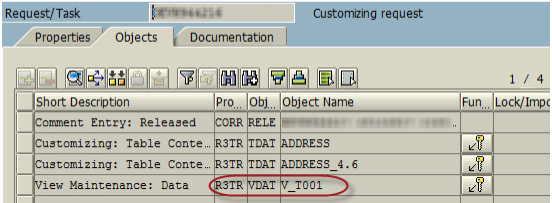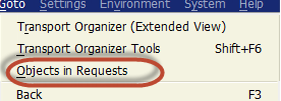How to track changes in SAP configuration objects
There are hundreds and thousands of different objects in SAP. I have written recently about how you can track changes in SAP objects like GL accounts, Cost Centres and so on. You may also be interested in reading about tracking changes in bespoke SAP objects.
Unfortunately, not all these objects create change documents to track amendments. What if you wanted to see who made changes and when they were made for objects where change documents are not automatically created? For example, there is no direct way to determine the date when the Company Code was created in SAP. The table T001, which holds the basic Company Code information, does not have any dates to permit tracking this. Also, there are no change documents for the object Company Code.
However, there is a way to do so, even if the object is only changeable in the Development system.
You remember that SAP systems’ landscape usually consists of several systems like Development, Test and Production. You even know that you can assign colours to different SAP systems.
Many objects in SAP, for example Company Code, Chart of Accounts, Sales Organisation, Purchase Organisation, account determination and so on, are only changeable in the Development system. If you want to move the change into Test and Production systems, you need to employ SAP’s Transport System and use a Transport Request.
Let’s continue with the example of Company Code.
Company Code is stored in transport requests under object R3TR VDAT V_T001. If you don’t know the object, you can figure this out by creating or editing the object and checking the transport details in Customizing Task within the Transport Request in transaction codes SE01 or SE10.

Now, start transaction SE01 or SE10, select menu “Goto” – “Objects in requests”.

Alternatively, go to transaction SE03 and select the option “Search for Objects in Requests/Tasks.”
Then populate fields with values VDAT and V_T001. You don’t need to put R3TR, it will be determined automatically.

You can add more filtering criteria on the same screen.
Now, run the report and get a list of transports with Company Code data.
This is a definitive list of “suspects” now. Go through the transports and find the one you need.

The transport itself now has all the data you need: who is transport owner, when the transport was created, released, imported into each system of the landscape etc.
Are you able to track your changes now?

Dmitry Kaglik liked this on Facebook.
Веб-сайт, на который вы хотите перейти, содержит вредоносное ПО!
Google Chrome заблокировал доступ к http://www.sapexpert.co.uk.
Спасибо за информацию. Проверил – вроде ничего очевидного не заметил.
Отправил в Google на перепроверку.
Excellent.
Thanks, Kothandaraman!
There are other ways also to track transports in the objects as below:
a)Configuration objects like V_T001: Table E071K holds details of transports for such objects.
b)Client-independent objects like programs: Table E071 holds details of such objects similar to E071K.
In SE016, these tables can be displayed with selection criteria for – transport number, object etc., with wild card search(e.g., DEVK* for transport request number, etc).
It lists the transport requests/tasks for the search criteria. Here however, you may find more than one line for a request/task. So you’d need to ignore duplicates. This ignoring is not required for the next step of finding transport request details/logs.
Then copy the transport request column lines as required.
In SE03 trxn, go to find requests. Paste the requests from SE16 above, and list them. This will give details of the requests.
From here, you can go to Transport logs, to find when a transport went to systems/clients like QA, Prod, etc.
From these logs, you can also find if a transport did not successfully complete due to errors like generation unsuccessful, etc.
Thanks, Jagan, for giving an alternative!
Is it possible to amend a workflow object after approval and hide the changes as a user?
Rapule,
Your suggestion breaks the audit trail principles. I don’t think it should be possible by standard means.